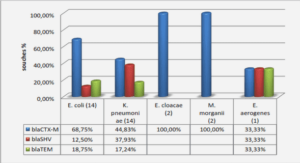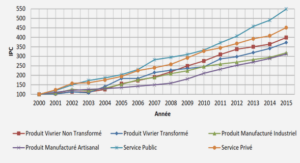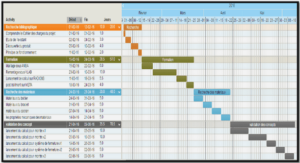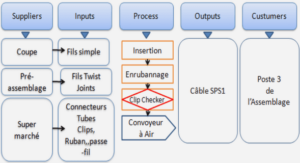Intoxications à la metformine
INTRODUCTION:
Le diabète de type 2, pathologie qualifiée d’épidémie mondiale est devenue une préoccupation majeure de santé publique. Dans cette pathologie, la metformine a un rôle central car il s’agit du traitement recommandé en première intention après l’échec des mesures hygiéno-diététiques en cas de découverte de diabète de type 2. Elle appartient à la classe des biguanides, commercialisée depuis les années 1950. Les principaux effets indésirables de la metformine sont les symptômes digestifs (nausées, dyspepsie, douleurs abdominales) et plus rarement l’acidose lactique. Malgré des règles de prescription bien établies avec une contre-indication chez les insuffisant rénaux sévères et la nécessité d’une surveillance étroite dans la population gériatrique de plus de 75 ans (“10irp04_reco_diabete_type_2.pdf,” n.d.), il est observé de manière non exceptionnelle des cas d’intoxication graves pouvant conduire au décès. Cette étude rétrospective au Centre Antipoison et de Toxicovigilance (CAPTV) d’Angers de septembre 1999 à septembre 2016 a pour objectif de mieux décrire les cas d’intoxication à la metformine et d’en analyser les principaux facteurs de risque de sévérité.
Principaux effets indésirables:
Les effets secondaires les plus courants sont d’ordres gastro-intestinaux avec des douleurs abdominales, et des diarrhées. Ces effets secondaires sont le plus souvent transitoires et cessent à l’arrêt du traitement. La complication principale de l’intoxication par la metformine est la survenue d’une acidose lactique. Le mécanisme de survenue d’une acidose lactique chez les patients traités par metformine est complexe et multifactoriel. L’inhibition de la néoglucogenèse hépatique empêche la métabolisation du lactate produit par le muscle et surtout l’inhibition du complexe I de la chaîne respiratoire accélère la glycolyse, oriente le métabolisme vers un fonctionnement anaérobie et aboutit à une baisse de la consommation d’oxygène et à la production de lactates (Fourrier and Seidowsky, 2010).
Surdosage:
Un surdosage important de metformine ou l’existence de risques concomitants peuvent conduire à une acidose lactique. Il convient de doser les taux sérique, plasmatique ou sanguin de metformine pour confirmer le diagnostic, évaluer le pronostic d’une intoxication et suivre l’efficacité du traitement. Avec une posologie thérapeutique, ce taux est de 1 à 4 mg/l (Netgen, n.d.). Les principes du traitement de l’acidose lactique reposent sur la correction de l’acidose métabolique, l’épuration de la metformine et le traitement d’une éventuelle pathologie intercurrente. L’épuration extrarénale est la technique de référence en cas d’acidose métabolique par intoxication médicamenteuse surtout si elle est associée à une insuffisance rénale (Fourrier and Seidowsky, 2010).
RÉSULTATS : METFORMIN OVERDOSE : A SERIOUS:
IATROGENIC COMPLICATION: Between 2000 and 2009, the prevalence of patients treated for diabetes increased from 2.6% to 4.4% and their number from 1.6 to 2.9 million in France. The prevalence of type-2 diabetes (T2D) continued to rise beyond experts’ forecasts, especially with a high prevalence in the population over the age of 60 years (Ricci et al., n.d.). Metformin is acknowledged worldwide as playing a pivotal role in the primary treatment of T2D (Kajbaf et al., 2013). It is a biguanide, introduced in 1957 along with Phenformin and Buformin. The last two were withdrawn in the 70’s due to a high incidence of lactic acidosis (LA) (Bailey, 2017). Metformin use has increased steadily from 24% of treatment visits in 1997 to 53% in 2012, 17 according to an American study (Turner et al., 2014), and in a recent French study, ENTRED, 62% of T2D were treated with a biguanide (“rapport-entred.pdf,” n.d.). The two studies show that metformin is the most commonly used treatment in T2D today and is increasingly prescribed. The side effects of metformin are very well known and include digestives symptoms such as diarrhea, digestive disorders, abdominal pain and more rarely LA, known to occur in patients with hypoxemic states such as renal insufficiency, cardiac insufficiency, and septicaemia (Singh, 2014). Even though critical reviews in this field have questioned the supposed dangerousness of LA in metformin-treated patients, the drug’s reputation still influences treatment strategies due to the high proportion of patients presenting with contraindications (Lalau et al., 2017). In France, the contraindications are based on the HAS’s broad recommendations and on the opinion of an expert committee and not on actual studies (“10irp04_reco_diabete_type_2.pdf,” n.d.). Metformin should be discontinued in patients suffering from severe renal impairment [glomerular filtration rate (GFR) < 30mL.min-1] and in any situations in which LA can occur (Lalau, 2010). Furthermore, the contraindications differ from one country to another (Kajbaf et al., 2013). Currently, non-exceptional cases of serious intoxication leading to death are observed (Bonsignore et al., 2014; Cantrell et al., 2012) Metformin can cause potentially lifethreatening metabolic acidosis with increased blood lactate level. Although rare, this condition carries a high risk of mortality and may occur in therapeutic use as well as in acute overdose. Most series report an incidence of 3 to 10 per 100,000 patient-years of metformin-associated lactic acidosis (MALA) (Lalau et al., 2017). It is in this context of the global epidemic of T2D that we wished to carry out a retrospective study, at Angers Poison Control Center (PCC) from September 1999 to September 2016, of cases of metformin poisoning in the general population in order to describe this population and highlight the main risk factors for severe poisoning.
MATERIAL AND METHODS:
This observational study was a retrospective review of all cases involving metformin intoxication at Angers PCC University Hospital. The Western France poison centre usually receives reports of a large number of cases of poisoning occurring in four French regions, representing a population of more than 12 million people. A total of 58,000 calls are received each year, and 56% of calls come from doctors (compared to 39% from the general public and 5% from nurses and paramedics). The PCCs data system is called SICAP (Système d’Information des Centres AntiPoison) and depends on the ANSES (French Agency for Food, Environmental and Occupational Health & Safety). All cases of metformin intoxication reported between September 1999 and September 2016 were extracted from the PCCs databases as authorized by the French Data Protection Committee (CNIL-Commission Nationale de l’Informatique et des Libertés). The inclusion criterion was defined as exposure to metformin in the population with or without symptoms. To carefully evaluate the severity of metformin intoxication, all cases of co intoxication with only side effects other than those of metformin were excluded and those with a final diagnosis dismissing a toxic cause.
RESULTS:
From September 1999 to September 2016, 382 cases of metformin poisoning were included. Average age was 44.7 +- 29.7 years with median of 52 years. Among these cases, 208 involved women and 174 involved men (sex ratio was 0.83). Circumstances were known in the 382 cases: 197 cases (51%) involved accidental exposure, with medication error or accidental exposure concerning notably children being the most common cause; 127 cases included suicide attempts (33%) and 58 cases concerned therapeutic accident (15%). The medical history was known in 353 of 382 cases: 173 patients had T2D and 11 cases had a medical history of chronic renal disease. These cases were divided according to their severity: 261 cases of “null severity” (grade 0), 40 cases of “mild severity” (grade 1), 14 cases of “moderate severity” (grade 2) and 67 cases of “high severity” (grade 3). We listed 21 deaths in this series.Medication errors and accidental intoxication together account for more than half of the cases (51%). All these records had no symptom with the exception of 3 cases of minor severity according to the PSS. This is a predominantly paediatric population covering accidental intoxication, with children taking medication belonging to someone else in the family, and a geriatric population for medication error by administration error.
DISCUSSION:
In our study, the aim was to highlight the main risk factor for metformin intoxication. The inclusion criteria were deliberately extended to metformin intake in four situations (self poisoning, medication error, accidental intoxication and therapeutic accident) and not only covered MALA, in order to show that metformin therapy could be life-threatening and to determine the risk factors in order to avoid severe clinical situations.The side effects of metformin, which has been prescribed for over 60 years, are well described and indisputable in terms of digestive symptoms such as abdominal discomfort, vomiting or diarrhea. LA is the most severe side effect. The incidence of LA in patients on metformin therapy called MALA appears to be extremely low, at 3 to 10 per 100,000 patient-years (Lalau et al., 2017), however LA can be fatal when it does occur (10 to 45%) (Lalau and Race, 1999). A recent Cochrane review which included 206 prospective trials, concluded that “there is no evidence from prospective comparative trials or from observational cohort study that 23 metformin is associated with an increased risk of lactic acidosis if prescribed under the study conditions” (Salpeter et al., 2003).
DISCUSSION ET CONCLUSION:
Dans notre étude, l’objectif était de mettre en évidence les principaux facteurs de risque d’intoxication par la metformine. Nous avons délibérément choisi une population large avec pour critère d’inclusion la seule prise de metformine pour mettre en évidence les 25 situations qui pouvaient entrainer des complications graves allant jusqu’au décès et de permettre aux praticiens d’anticiper. La metformine est actuellement l’antidiabétique oral le plus utilisé en France et aux États Unis. Il a un rôle central dans le traitement des diabétiques de type 2 car d’une part il est prescrit en première intention après l’échec des mesures hygiéno-diététique et d’autres part il possède plusieurs effets bénéfiques : la stabilisation du poids, le métabolisme lipidique et la réduction des complications macro-vasculaires. Bien que rare, l’acidose lactique est la complication la plus grave de la metformine car associée à un fort taux de mortalité. Le rôle de la metformine dans son apparition fait régulièrement débat et remet en cause sa potentielle dangerosité. Actuellement, les contre-indications établies par l’HAS en France sont : une insuffisance rénale chronique avec une clairance inférieure à 30 mL/min ; une affection aigue susceptible d’altérer la fonction rénale telle qu’une déshydratation, un choc, une infection grave. Ces situations cliniques à risque de complications graves sont en réalité toutes celles amenant à une hypoperfusion tissulaire ou une accumulation de metformine, celle-ci étant exclusivement excrétée par voie rénale.
|
Table des matières
INTRODUCTION
METFORMINE
Structure
Pharmacodynamie
Pharmacocinétique
Indications et contre-indications
Principaux effets indésirables
Surdosage
METHODES
RESULTATS : Metformin overdose : A serious iatrogenic
complication
Introduction
Material and methods
Results
Discussion
DISCUSSION ET CONCLUSION
![]() Télécharger le rapport complet
Télécharger le rapport complet





